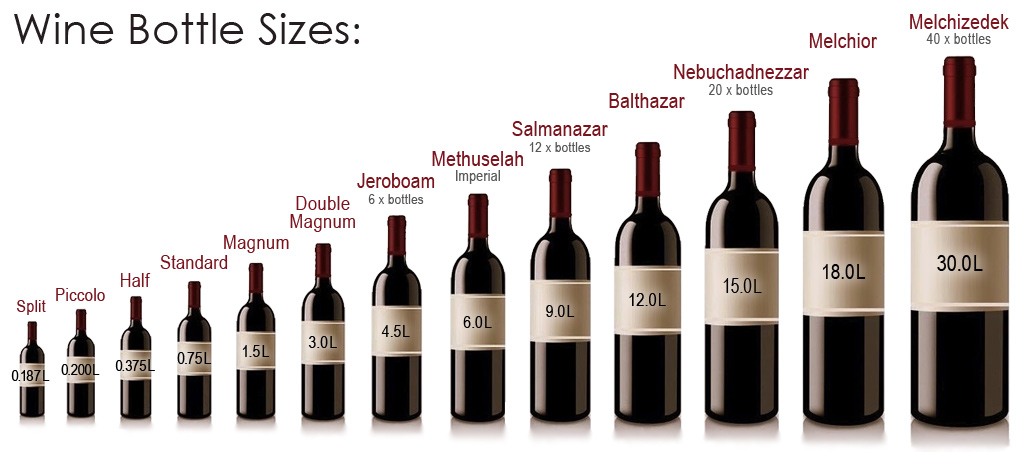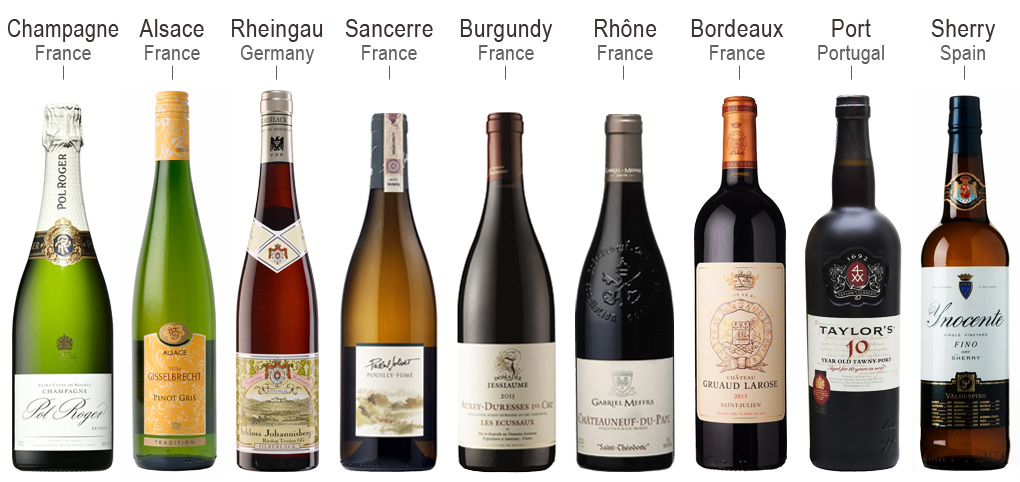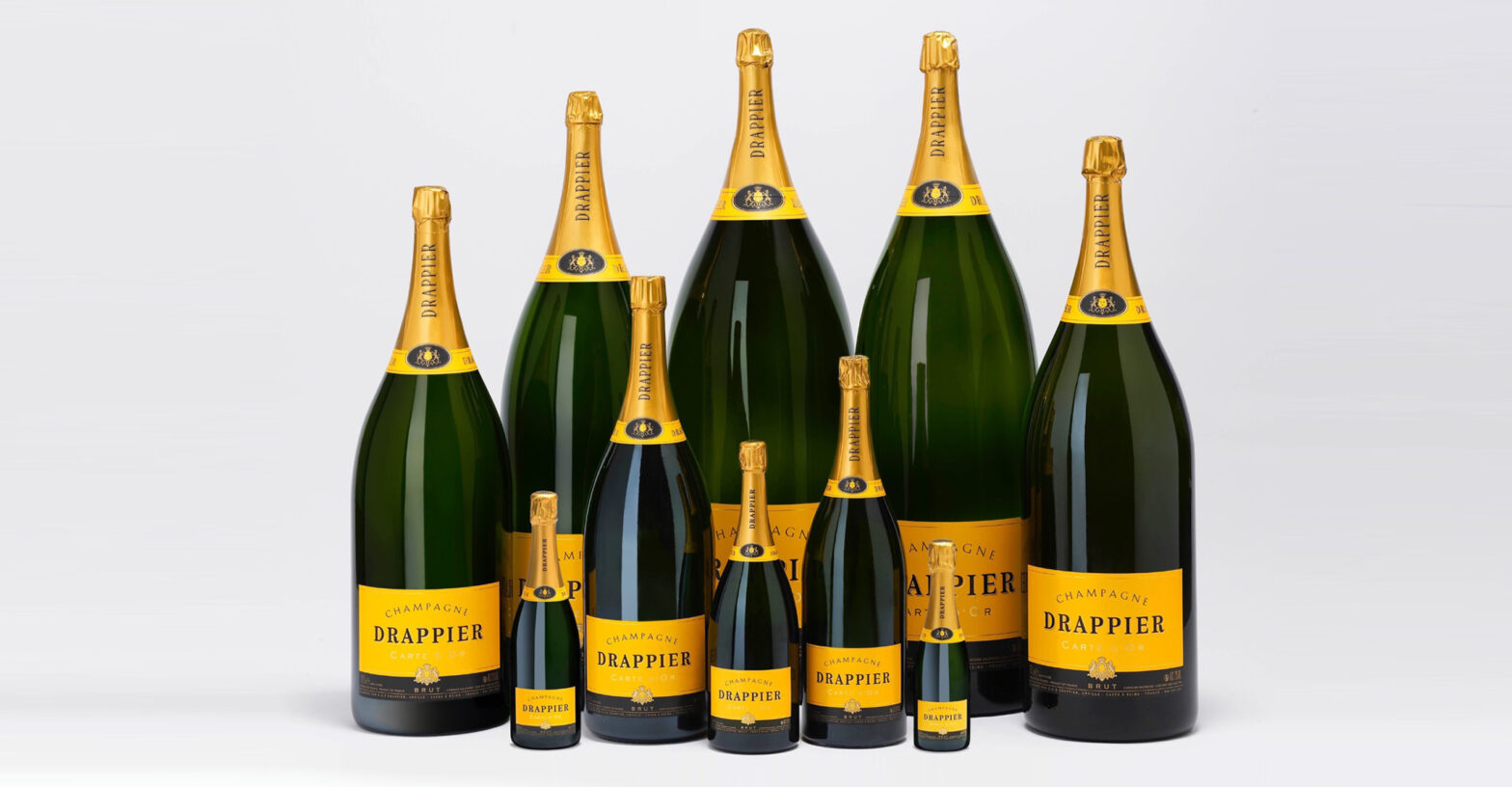Wine Bottle Sizes:
Over the centuries - because there was little uniformity in the size and shape of wine bottles, people purchasing wine often did not know how much (from different suppliers) they were getting. At one point in the Roman Empire, people would bring their own flask / amphora and just pay for a set volume measured and then poured into their container / bottle.
As the Romans advanced their techniques, they eventually discovered that the easy-to-blow onion-shape bottles they typically created, were not ideal for storing wine on its side - which helped it age and keep wet the (rags used as stoppers) or cork.
So they began to make longer, narrow-rounded bottles that were easier to carry and contained a more standard amount, between 0.70 litres and 0.80 litres.
This also helped standardize the amount of wine people purchased, though it wasn't until the 1800's that glass blowers perfected this. In 1979 both the United States and the European Union set standards that wine bottles hold exactly 0.75 litres.
As well as the traditional (in many cases, legally required) 750ml bottle (the standard size on retail shelves & most wine-lists) along with the half-bottle (containing 375ml), - and becoming slightly more frequent the 1500ml Magnum size - there are a number of legally permitted (large format) bottles. Many of the larger bottles are named after *biblical kings.
Here are some examples of wine bottle sizes:
• Jeroboam - There are two sizes of Jeroboams: the 'sparkling' wine Jeroboam holds 4 x bottles, or 3 litres: and the 'still' wine Jeroboam which holds 6 x bottles or 4.5 litres.
• Rehoboam - *Champagne only (4.5 litres) = 6 x bottles.
• Imperial - (6 Litres) = 8 x bottles.
• Methuselah - The same size as an 'Imperial' bottle (6 litres) - usually used for Champagne / sparkling wines.
• Salmanazar - (9 Litres) = 12 x bottles.
• Balthazar - (12 Litres) = 16 x bottles.
• Nebuchadnezzar - (15 Litres) = 20 x bottles.
• Melchior - (18 Litres) = 24 x bottles.
• Solomon - (20 Litres) = 28 x bottles.
• Melchizedek - (30 Litres) = 40 x bottles. - *(The Drappier family make a Champagne this size)
The only other commonly encountered size is the 500ml bottle, used for some Ports designed for drinking young, Tokaji (Tokay or Tokaj), the famous sweet wine of Hungary, and in France's Beaujolais wine region a 500ml bottle (which they call a pot) has long been used.

Wine Bottle Shapes:
Bottle shape knowledge can give you a small clue as to what the wine contents might be, even without reading the label. Most people are familiar with the typical Champagne shape bottle, but many other wine regions also have a history, tradition or preference for a particular bottle shape - *(and also colour).
● Bordeaux: Straight sides and tall shoulders, with dark green glass for the red wines of the region (e.g. Cabernet Sauvignon), lighter green for the dry white wines *(e.g. Sauvignon Blanc) and for the sweet/dessert white wines clear glass *(though in a 375ml volume). This bottle shape is widely used in the New World by winemakers bottling Bordeaux varietals, but it is also now widely used in Italy, Spain and many other wine countries.
● Burgundy: Gently sloping shoulders suggests a wine from Burgundy, with both red and white wines in similar green glass. These are sturdy, heavy bottles, with a slightly fatter girth than other wine bottles. This shape is also widely used throughout the New World for Chardonnay and Pinot Noir.
● Rhône: Similar in style to the Burgundy, but not so fat. In addition, some may bear a coat of arms on the neck, particularly Châteauneuf-du-Pape. The traditional Côtes du Rhône bottle is similar in shape, but with more angular sloping shoulders. New World Syrah / Shiraz *(plus G.S.M. blends) may use a similar bottle.
● Champagne: This bottle design is born out of necessity as much as style. The gently sloping shoulders and a deep punt and most importantly the thick glass is necessary - as the pressure inside the bottle is 80 - 90psi (5-6 atm) - two to three times the pressure inside an average car tire. And the colour can very between a dark green or brown - again to protect the wine from light while ageing.
● Alsace: A slender bottle, narrower than other styles, also taller, with a very gentle slope to the shoulders. Green glass suggests either the Alsace in France or the Mosel in Germany - as brown glass is traditional for some wines in the Rhine-Rheingau region. The wine contained may still be of a wide variety of styles, ranging from dry and off-dry, through to lusciously sweet dessert wines.
● Fortified wines: Many fortified wines, such as Port, Madeira, Marsala and Sherry, are placed into dark glass to protect from the light while ageing - plus transported around the globe in quite sturdy bottles. The aged & vintage Port bottles may have quite a bulge in the neck, supposedly to help capture the sediment as the aged wine is decanted - plus it allows you somewhere to rest the hot Port-Tongs when you are removing fragile 30+ year old corks.

